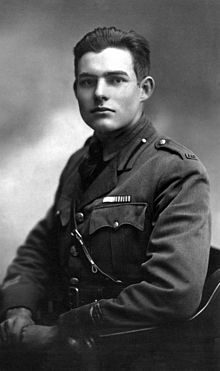“Money is the god of our time, and Rothschild is his prophet,” wrote German poet Heinrich Heine.
While penning this bon mot, the Rothschild he had in mind was James, head of his family banking empire’s French branch and the subject of a charming
exhibition at the old National Library in Paris.
"Portrait of James de Rothschild" (1864) by Hippolyte Flandrin. The oil painting is on view at the Paris National Library through Feb. 10, 2013. Source: Bibliotheque Nationale de France via Bloomberg
"Library of the Rothschild Bank on Rue Laffitte in Paris" (ca 1880). The anonymous oil painting is on view at the Paris National Library through Feb 10. Source: Bibliotheque Nationale de France via Bloomberg
Enlarge image 
Check for One Million Thalers

Bibliotheque Nationale de France via Bloomberg
A check for one million Prussian thalers, the first installment of the war reparations (1871). It is on view at the Paris National Library through Feb 10.
A check for one million Prussian thalers, the first installment of the war reparations (1871). It is on view at the Paris National Library through Feb 10. Source: Bibliotheque Nationale de France via Bloomberg
"Hall of the Chateau de Ferrieres" (ca 1865) by Eugene Lami. The water color is on view at the Paris National Library through Feb. 10. Source: Bibliotheque Nationale de France via Bloomberg
The youngest son of Frankfurt banker Mayer Amschel Rothschild, the founder of the dynasty, Jakob Rothschild, as he was originally called, arrived in Paris in 1812. Five years later, after the family was ennobled by Austrian emperor Franz I, he renamed the bank “Banque MM. de Rothschild Freres,” (the ’de’ indicated nobility).
In 1818, he moved the bank’s headquarters to the townhouse of Napoleon’s former chief of police, Joseph Fouche, on Rue Laffitte, close to the
Paris Bourse. (CAC)
His meteoric rise began after 1830 when the “Citizen King” Louis Philippe was crowned. His prime minister, Francois Guizot, preached the gospel: “Enrichissez-vous” (Enrich yourselves).
Railroad Baron
Nobody embraced this dictum more than Rothschild. He frequently dined with the king at the Tuileries Palace and bankrolled some of France’s biggest industrialization projects, including the Ligne du Nord, the railroad that connected Paris with Lille and Brussels.
The opening of the monumental Gare du Nord, the gateway to Paris for British visitors arriving by train, was one of the proudest moments of Rothschild’s career.
His relationship with Napoleon III, who succeeded Louis Philippe in 1848 as president and became emperor in 1852, was less friendly -- much to the delight of Rothschild’s competitors who froze him out of several national projects.
Yet within a few years Le Grand Baron had become indispensable, and the emperor’s 1862 visit to Rothschild’s country house, the Chateau de Ferrieres, sealed his return to favor.
One of the most impressive items in the exhibition shows just how indispensable he had become. After the country’s defeat in the war against Prussia in 1871, he issued a check for one million Prussian thalers, the first instalment of war reparations imposed on
France.
A-Listers
The emphasis of the show is on the brilliant social life of James, who married his niece Betty. In their townhouse adjacent to the bank, they entertained Le Tout Paris, including composers Gioacchino Rossini, Hector Berlioz, Frederic Chopin and Franz Liszt, as well as painters Jean Auguste Dominique Ingres and Eugene Delacroix.
Rossini was happy to compose a “Hymn to Napoleon III” on the occasion of the emperor’s visit to Ferrieres. Chopin dedicated a waltz and a ballad to Rothschild’s daughter
Charlotte, to whom he gave piano lessons.
Not the least of the reasons why Le Beau Monde flocked to Rothschild’s dinner parties was his gifted cook Antonin Careme who had worked at the courts of St. James and
St. Petersburg before coming to Rue Laffitte.
There he created the Souffle a la Rothschild, the Saumon a la Rothschild and the Filet de Boeuf a la Rothschild, slices of cold beef covered with foie gras and truffles and other delicacies documented in his “L’Art de la Cuisine Francaise” included in the exhibition.
Not everyone was in awe of the Le Grand Baron. The exhibition includes a number of caricatures and reminds us that he inspired one of Honore de Balzac’s less attractive characters who appeared in 12 of his novels: Frederic de Nucingen, a roguish banker who speaks French with a heavy German accent and who made his fortune from a series of bogus bankruptcies.
Numerous illuminated manuscripts, paintings and sculptures, some portraying Christian saints, evoke Rothschild the bibliophile and art collector. Only Ingres’s portrait of Betty, the gem of his collection, is missing from this comprehensive exhibition.










